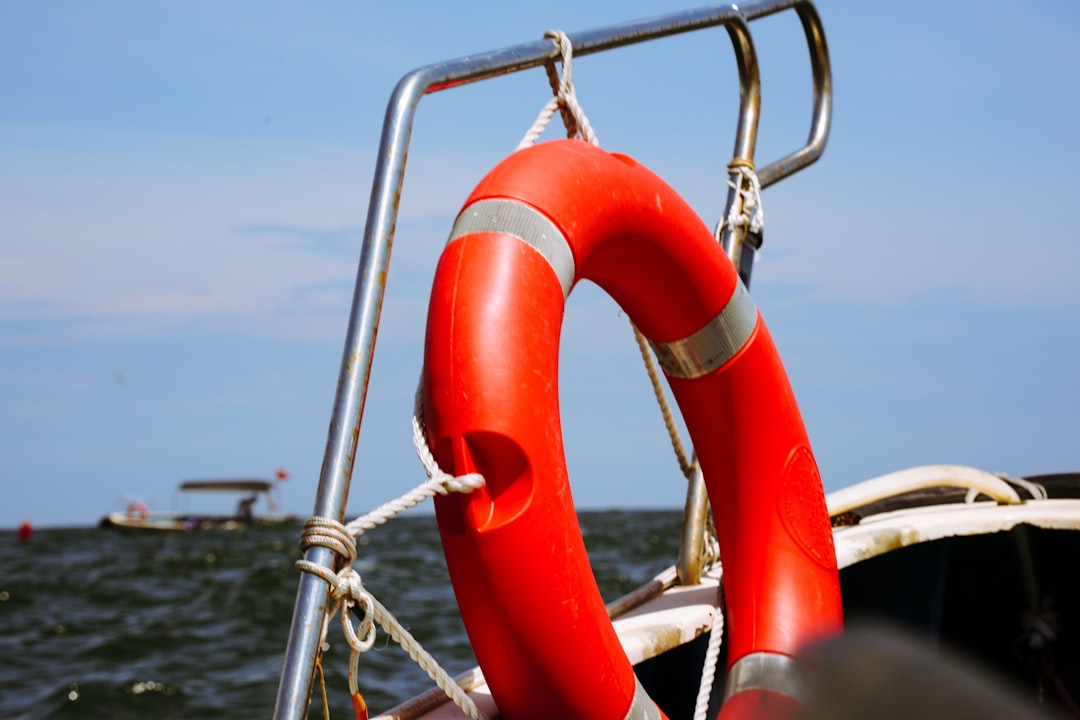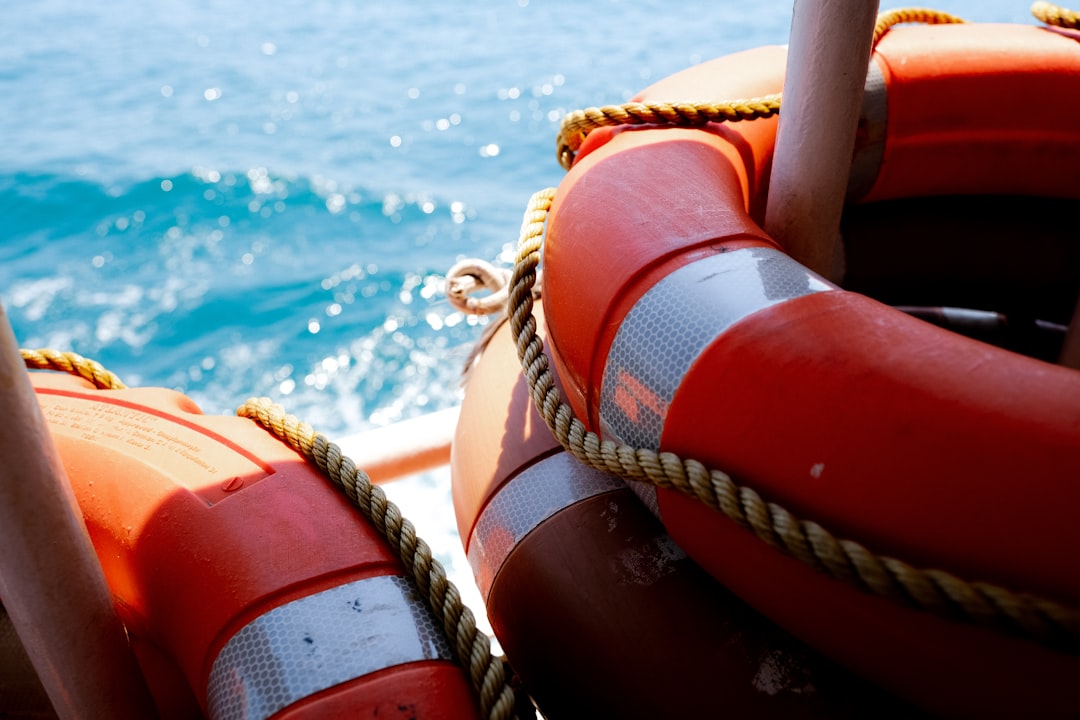

Engage prospects with a scan and streamline customer engagement with FREE QR code marketing tools by Sona – no strings attached!
Create a Free QR CodeFree consultation

No commitment

Engage prospects with a scan and streamline customer engagement with FREE QR code marketing tools by Sona – no strings attached!
Create a Free QR CodeFree consultation

No commitment
Marine insurance providers face mounting pressure to deliver faster quotes, seamless customer experiences, and efficient risk management while connecting a traditionally offline industry to the always-on digital world. As regulations evolve and competition intensifies, bridging physical touchpoints with digital engagement has become essential for growth. Whether you are promoting boat, yacht, or marine liability coverage, every in-person interaction represents a potential lead or a missed opportunity. Missed or anonymous prospects, especially those who do not fill out a form or otherwise self-identify, can quietly erode the top of your pipeline and make meaningful growth elusive.
QR codes present a powerful, app-free solution that instantly connects policy seekers from printed materials, event booths, or renewal packets to online quote forms, claims tools, and educational content. Especially in marine insurance, where some of the highest value prospects might only interact offline or browse anonymously, these codes provide a bridge, capturing signals and driving action before interest fades or competitors step in first. With the right setup, every scan becomes measurable, attributable, and immediately actionable.
This article explores practical strategies for integrating QR codes throughout your marine insurance provider marketing mix. You will learn how to capture leads, enhance customer journeys, and unlock data-driven growth while addressing industry-wide challenges like untracked leads, anonymous website visitors, and reactive follow-up. Along the way, you will see how modern platforms such as Sona QR support dynamic code management, analytics, and CRM integrations that turn offline engagement into revenue outcomes.

Marine insurance providers frequently encounter a critical challenge: prospects may pick up a brochure at a marina or see a banner at a trade show, yet their interest goes untracked if they do not immediately submit a form or call. This gap means high-value opportunities often slip through the cracks, especially for those not plugged into your CRM. QR codes bridge the gap between physical touchpoints and digital outcomes for marine insurance providers, making it easier to drive lead capture and accelerate the policy sales process before competitors engage first.
The fastest gains come from replacing outdated analog processes with simple, scan-to-action workflows. Printed brochures that once offered static information become entry points to instant quote flows. Paper forms that would have required mailing or manual processing become mobile forms that pre-fill known data. Manual intake processes that depended on voicemail and callbacks become instant calendar bookings or live chat. Each improvement not only removes friction but creates a data trail you can analyze and optimize.
Here is how to do it effectively:
By replacing legacy brochures, static forms, and manual intake processes, marine insurance providers can drastically reduce friction and prevent loss of insight from untracked physical interactions. QR-powered workflows streamline quoting, simplify document collection, and give prospects a seamless path from interest to insured. Modern platforms like Sona QR support this transformation end to end: from dynamic code generation to real-time analytics and CRM integration for lead follow-up, so no lead is left anonymous or unpursued.

Lengthy sales cycles, high-touch consultative selling, and invisible, anonymous web visits frequently stall growth for marine insurers. It is common to invest in signage at a regatta or distribute printed guides at a marina, only to see minimal attribution of that activity to your pipeline. Without a way to convert those moments of interest into identifiable leads, it is difficult to know what works, who is engaged, and when to follow up.
QR codes address these challenges by bridging the offline-to-online disconnect for brokers and customers alike. They enable scan-to-quote flows at the dock, scan-to-claim at the scene of an incident, and scan-to-renew when a notice arrives in the mail. The result is a faster, simpler experience for policyholders and a clearer, more attributable funnel for providers.
From policy packets to marina signage, QR codes make every touchpoint actionable. Scans turn formerly anonymous or inefficient interactions into measurable growth, enabling your teams to engage earlier and convert faster.

One persistent industry frustration is the inability to tie in-person interactions back to revenue-generating actions. A prospect may read your printed flyer at a harbor, but unless they act immediately, their research is invisible to your systems. QR code formats solve this by aligning the action you want with the simplest possible path for the prospect.
For marine insurance providers, some formats are more impactful than others because they match the most common actions: getting a quote, contacting a broker, filing a claim, and saving contact information for later. The key is to select the format that maps directly to intent and to use dynamic codes for anything that may need to change or be tracked.
Dynamic QR codes provide flexibility and control. You can update quote forms or claims destinations as offerings evolve, A/B test landing pages, track engagement by campaign or broker, and reinforce brand identity through custom design. With a platform like Sona QR, your team can manage every format from a single dashboard, standardize templates, and scale deployment without losing governance.

Despite growing investment in digital channels, many marine insurance providers still lose high-value leads at physical points of contact such as events, marinas, or direct mail. Often the challenge is not a lack of interested prospects, but an inability to capture interest at the right moment. QR codes reduce this friction by converting real-world curiosity into measurable engagement.
Focus first on placements where your audience already pauses, reads, or needs help. Test different offers and calls to action. Consider environmental variables such as distance, glare, and motion. When in doubt, increase code size, simplify the CTA, and place the code where a user can safely stop and scan.
By targeting these environments, you can systematically capture demand where it appears most often in the physical world. Over time, your analytics will reveal which placements, offers, and assets deserve continued investment.

Traditional methods that rely on call-ins or long web forms often produce delayed engagement or missed revenue. For policyholders, waiting to speak with a broker or having to mail paperwork adds friction and increases the risk of churn. QR codes reframe the experience by offering immediate, guided actions.
The most effective use cases map to high-value, high-frequency interactions. Start with the journeys that affect revenue the most, then expand to service, education, and loyalty.
Each of these use cases improves customer experience while creating clean attribution for marketing and sales. With dynamic codes, you can test new offers and switch landing pages without reprinting physical materials.
A challenge many marine insurance providers share is the lack of actionable intelligence from offline campaigns. Few can segment, measure, and re-engage interested prospects based solely on physical interactions. QR codes transform every scan into an intent signal that carries context such as location, time, and campaign relevance.
By deploying multiple codes across touchpoints, you can automatically segment your audience and tailor follow-up communications. Over time, this creates a high-quality dataset for persona development and predictive scoring. It also ensures your most valuable prospects receive the right message at the right moment.
For marine insurance specifically, consider distinctions such as yacht owners vs. small craft owners, recreational boaters vs. commercial operators, and policyholders vs. quote seekers. With Sona QR, each code can be pre-labeled with segment tags. As scans occur, lists build themselves, enabling you to retarget based on real behavior rather than assumptions. To strengthen your strategy, explore Sona’s perspective on intent data and connect scan insights to your CRM with this guide to HubSpot CRM. Browse Sona QR’s use case library for inspiration by journey stage.
One of the most pervasive pain points in marine insurance marketing is the difficulty of attributing new business or renewals back to specific touchpoints, especially for offline assets. QR codes provide a unified measurement layer that aligns physical marketing spend with digital outcomes and supports real-time engagement across channels. Learn more about offline attribution approaches that connect print to revenue.
Think of QR codes as connectors. They link your print collateral to your digital quoting engine, your booth conversations to your CRM, and your broadcast creative to a personalized landing page. When managed centrally, they also unlock a new layer of performance data across channels that historically were hard to measure.
With a centralized platform like Sona QR, you can manage all codes, monitor performance, and sync scan data with your CRM and ad platforms. This connected approach turns QR activity into a reliable source of attribution and pipeline influence.
QR campaigns work best when they are structured, tested, and measured with the same rigor as digital advertising. Before printing or deploying your codes, clarify your objectives, define your data model, and map your user experience from scan to follow-up. A little planning will prevent common pitfalls such as untracked scans, slow-loading pages, or dead ends that frustrate users.
Use the following steps to plan and launch a campaign that captures demand at the source and converts it into measurable results. For each step, note the stakeholders involved, the approval process, and the tools required so your team can repeat success at scale.
Start by defining a single, clear objective that aligns with a revenue outcome. For example, increase digital quote requests at a boat show, reduce call-center volume for endorsements by 20 percent, or accelerate claim intake during storm season. The more specific your goal, the easier it will be to design the experience and measure success.
Identify the offline gap you want to close. If you typically collect business cards at events then follow up days later, switch to a scan-to-schedule flow that books meetings on the spot. If renewals are lost due to paperwork delays, add a scan-to-renew experience with pre-populated data and digital signature.
Choose a code type that matches your objective. Use a dynamic QR code for editable destinations, tracking, and optimization. Dynamic codes let you update links, test landing pages, and capture detailed analytics without reprinting materials. Use a static code only for fixed destinations like a compliance PDF or evergreen safety checklist. You can create both in minutes with Sona QR.
Map the destination experience to the action. For quotes, link to a mobile-optimized form that takes two to three minutes. For claims, link to a guided intake flow that supports photo upload and location capture. For broker follow-up, link to a vCard and a scheduling page so the user can choose how to connect.
Design your QR for clarity and scannability. Add your logo, brand colors, and a visible frame that makes the code feel intentional, not decorative. Pair it with a concise, benefit-driven CTA such as Scan for an instant boat quote or Scan to file a claim in minutes. Ensure the code is large enough for the expected scanning distance and environment.
Test in real-world conditions. At marinas and events, glare, motion, and distance can reduce scan rates. Test the code under varied lighting, on different devices, and at multiple angles. Confirm that the landing page loads quickly on cellular connections, that the form is easy to complete on mobile, and that success messages set the right expectation for follow-up. For fundamentals and creative ideas, review these QR marketing tips.
Roll out your codes where they will be seen by the right audience at the right moment. Prioritize event signage, renewal mailers, harbormaster offices, service yards, and broker business cards. Tie each placement to a unique code so performance can be compared and optimized over time.
Provide partners and brokers with standardized assets. Share print-ready files, messaging guidelines, and landing page links. Offer a short training so staff know how to introduce the QR experience to prospects and policyholders. The easier it is to deploy consistently, the faster you will see results.
Instrument every code with tracking parameters and campaign tags. Monitor not just scan volume, but also downstream conversion metrics such as quote completion rate, schedule rate, and bind rate. Compare performance by channel, message, and design.
Iterate quickly. A/B test your CTA language, landing page headlines, and form steps. Shift budget and inventory toward the highest performers. With Sona QR, you can track scans by time, location, and device, enrich leads in your CRM, and update destinations on the fly to keep improving while the campaign runs. If you use HubSpot, this guide to HubSpot CRM shows how to unify marketing and sales data.
A widespread frustration for marine insurance providers is not knowing which touchpoints actually drive revenue. Because leads often engage anonymously or across multiple offline and online channels, attribution can be murky. QR programs resolve this ambiguity by connecting every scan to a specific asset, location, and moment in time, then tying that signal to downstream actions such as quotes, calls, and bound policies.
To make this work, measure beyond the scan. Treat the scan as the first step in a mini-funnel that continues through landing page views, form completion, broker contact, and outcome. When each step is tagged and synced to your CRM, you gain clear visibility into ROI and the levers that improve it.
Modern analytics now enable providers to uncover the story behind every interaction, bringing much-needed revenue accountability across the entire marketing mix. The payoff is not just better reporting, but a continuous improvement loop that accelerates growth.
As adoption of QR grows, the risk of campaign fragmentation increases. Codes may be deployed widely, yet data remains siloed or attribution unclear. A few disciplined practices ensure every QR initiative contributes real value and supports a connected customer journey.
Focus on data consistency, clear calls to action, and operational readiness. Train brokers to weave QR into conversations naturally and to follow up quickly when scans signal intent. Align incentives so partners and staff benefit from trackable, higher quality leads.
These practices compound. Over time, your QR ecosystem becomes a reliable source of qualified leads, richer data, and faster cycle times from interest to insured.
QR codes are an increasingly critical lever for digital transformation in the marine insurance sector. They turn every physical surface into a digital entry point and every moment of interest into a measurable action. For providers, this means fewer missed opportunities, faster quoting and claims experiences, and clearer attribution across the entire marketing mix.
Here is what effective QR deployment delivers:
With a platform like Sona QR, you can generate and manage dynamic codes at scale, monitor performance in real time, and sync scan data with your CRM and ad platforms. Start creating QR codes for free: Start creating QR codes for free. By closing the offline-to-online gap, marine insurance providers can engage smarter, grow faster, and deliver unmatched client experiences across dockside, digital, and everything in between.
QR codes have transformed marine insurance providers from traditional outreach methods into dynamic, measurable lead generation channels. Whether it’s capturing qualified leads, streamlining policy inquiries, or enhancing customer engagement, QR codes replace cumbersome processes with instant, mobile-friendly actions—turning every touchpoint into a powerful conversion tool. Imagine knowing exactly which marketing collateral or event drives the most high-value leads—and being able to act on that data in real time.
With Sona QR, marine insurance providers can create dynamic, trackable QR codes in seconds, update campaigns instantly without reprinting, and connect every scan directly to revenue and customer acquisition metrics. No more guessing which efforts pay off—just smarter, more efficient lead capture and customer engagement that drives growth.
Start for free with Sona QR today and transform every scan into a new client, a meaningful conversation, or a closed policy.
The article does not specify top marine insurance providers but focuses on how providers can grow using QR codes and digital tools.
Marine insurance policies include boat, yacht, and marine liability coverage.
Choose a provider that offers seamless digital engagement, fast quoting, efficient risk management, and integrates offline and online touchpoints effectively.
While the article does not detail premium factors, it mentions that evolving regulations and underwriting criteria impact offerings.
You can get a quote by scanning QR codes found on brochures, event banners, marina posters, or renewal packets that link to online quote forms.
QR codes connect offline interactions to online actions, enabling faster quotes, claims intake, lead capture, and measurable marketing attribution.
Common QR code formats include web links to quote forms, pre-filled forms, vCards for broker contacts, app downloads, and SMS or email prompts.
Effective placements include broker business cards, policy packets, marina posters, event banners, renewal mailers, fleet signage, and trade show booths.
Providers track scans with context such as location and device, measure engagement metrics, sync data with CRM systems, and attribute revenue to specific QR code assets.
Define clear objectives, select appropriate QR code types, design and test codes for scannability, deploy across high-impact channels, and continuously track and optimize performance.
QR codes simplify quoting, claims reporting, policy endorsements, and provide quick access to safety and compliance education, reducing friction and speeding service.
By assigning unique QR codes to different campaigns and touchpoints, providers capture intent data that segments audiences for personalized retargeting and follow-up.
Use unique codes per campaign, add tracking parameters, automate personalized follow-ups, educate staff on promoting QR scanning, and deploy codes on renewals and policy cards.
Use Sona QR's trackable codes to improve customer acquisition and engagement today.
Create Your FREE Trackable QR Code in SecondsJoin results-focused teams combining Sona Platform automation with advanced Google Ads strategies to scale lead generation

Connect your existing CRM

Free Account Enrichment

No setup fees
No commitment required

Free consultation

Get a custom Google Ads roadmap for your business






Launch campaigns that generate qualified leads in 30 days or less.
